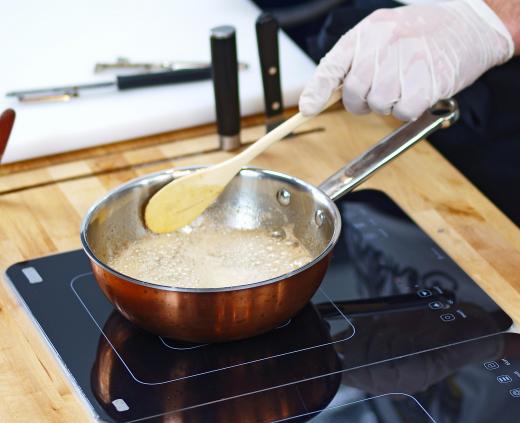What is Magnetic Induction?
Magnetic induction, which is sometimes referred to as electromagnetic induction, is the creation of an induced electric current, usually in conductors moving within a magnetic field. It could also describe the creation of a magnetic field by the flow of current through a conductor. In technology, magnetic induction is used for induction motors, stoves, transformers, flashlights, conductors of wireless energy, generators, and many other applications.
The basic principle of magnetic induction is that a changing magnetic flux will induce an electric current in a nearby conductor. In this scenario, the current must be traveling through a closed pathway, such as a completed circuit, and the magnetic flux can be altered either by a change in the strength of the magnetic field or by the motion of the conductor through the magnetic field. Faraday’s law gives a quantitative relationship between the change in magnetic flux and the induced electromotive force (EMF), which equals the negative change in flux per unit time. For a coil of wire, the change in magnetic flux per time must be multiplied by the number of coils to determine the correct EMF value.

In practical applications, magnetic induction can be used to convert different types of energy. It can be used to generate heat, as in the case of the magnetic induction stove, or to create mechanical energy and movement, as in the case of the induction motor. While the mechanisms of energy transfer are different for each device, they operate on similar basic principles.
Magnetic induction cookers operate by creating a current that generates resistive heat in the cooking pot or pan. The base of the cooker is formed by a coiled wire, which receives an alternating current (AC). This current induces a magnetic field, which oscillates along with the current and generates an induced electric current in the metal pot or pan. Resistive heat is generated based on the individual pot or pan’s resistance, which is optimized through the use of ferromagnetic materials, such as steel and iron. Similar heating mechanisms can be used in other applications aside from cooking, including metal welding.
The creation of mechanical energy and rotation in magnetic induction motors also involves oscillating magnetic fields. In this setup there are two parts of the motor which are called the stator, or stationary part, and the rotor, or rotating part. Each is able to influence the magnetic field of the other to create torque, which turns the motor and creates mechanical energy. This mechanism of operation is similar to that of transformers, as both magnetic induction motors and transformers work by altering the electric current in the system.
AS FEATURED ON:
AS FEATURED ON:











Discuss this Article
Post your comments